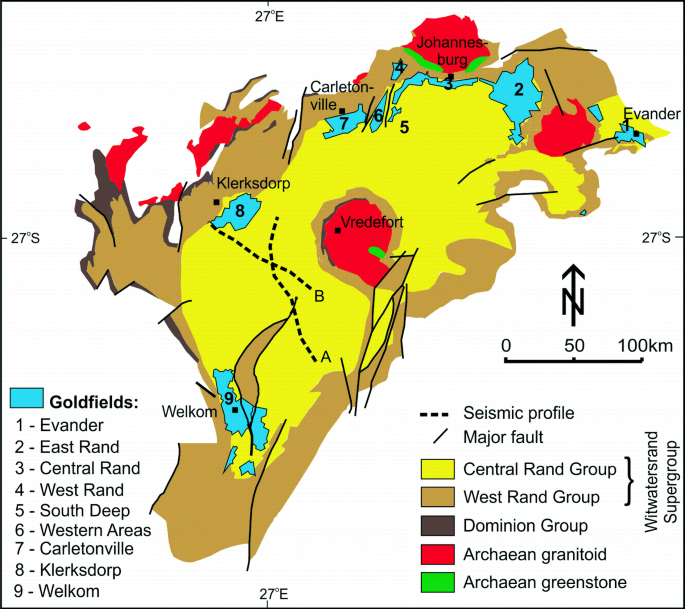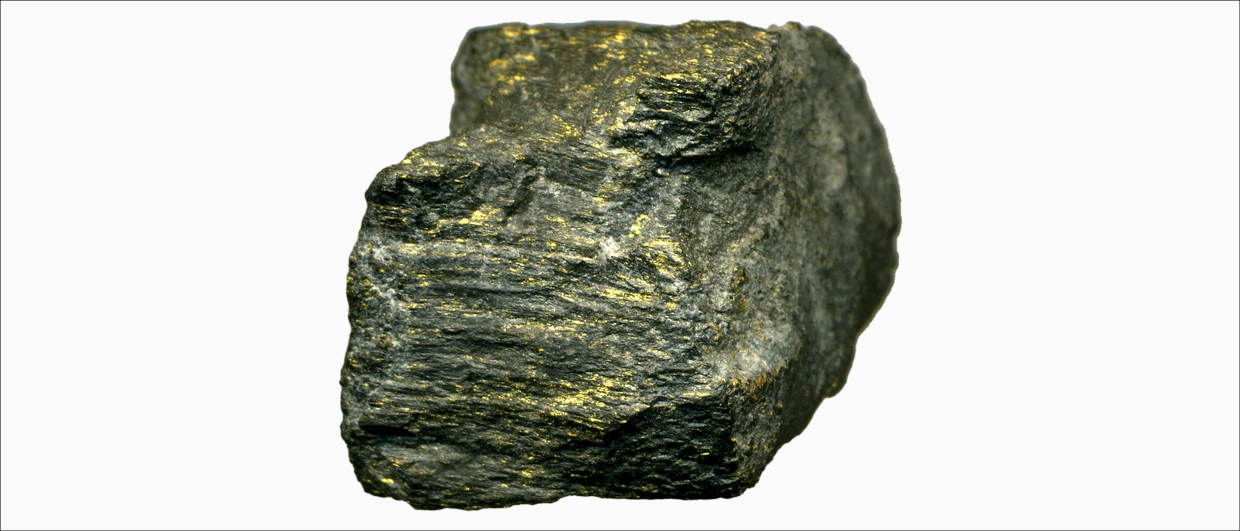In the Archean, braided rivers formed fan deltas along the shores of the Witwatersrand Sea in what is now South Africa. Today, the Witwatersrand Basin is known as the world’s largest goldfield. In the fluvial deposits, gold is found in very specific paleo-placer deposits, called Carbon Leader Reefs.
Not the reefs you’d think of
The Carbon Leader Reefs set themselves apart from the other fluvial deposits by the large size of the conglomeritic clasts, presence of (pyro)bitumen and high concentration of uraninite minerals.
The Reefs have been mined for gold since 1884 and since 1952 uranium has been extracted as a valuable by-product. However, miners have always had to deal with significant amounts of methane flowing from faults in the formation, making for dangerous working conditions.
The Beatrix mine, 250 km SW of Johannesburg, has the highest methane emission rate of any gold mine in South Africa and has experienced a number of underground explosions as a result. Recently, the mining company started capturing part of this methane to generate electricity for the mine’s own running while flaring off the excess.
In the same region as the Beatrix mine, Renergen Ltd has recently started specifically exploring and drilling for gas in the Witwatersrand Supergroup to supply the commercial market. The gas produced is very dry, up to 94% methane with no heavier hydrocarbons present. A welcome addition is that the gas contains economic concentration of around 3% helium.

Degrading Archean carbon
The methane is believed to be biogenic in origin, meaning that microorganisms currently living in the formation water are degrading Archean carbon. This carbon could be the organic material that is also observed in the Carbon Leader Reefs. There is much debate to what the origin of the thin organic rich layers is, with some scientists believing they are stromatolite mats while others interpret them as pyrobitumen; remnants of liquid hydrocarbons that originated from mudstones deeper down.
The helium present in the produced gas is the product of radioactive decay of uranium and thorium contained within minerals like uraninite. The Vredefort meteorite impact that hit the area 2 billion years ago, likely liberated all helium that had built up to that point and new helium has been accumulating since.
An endless source?
The gas mixture is entirely contained within fractures and faults while the matrix rock has zero porosity and permeability. Well testing and observations from gas leakage in mines has demonstrated no significant pressure drops over time. There is anecdotal evidence of boreholes drilled by mining companies that have been emitting gas for over 40 years without a discernible pressure drop. This has given Renergen confidence to believe that the biogenic methane is generated at a renewable rate.
What would the miners of the 19 century gold rush have thought if they knew that their sought after Carbon Leader Reefs were not only a source of gold but also uranium, methane and helium!
Renergen started production of LNG in September 2022 and production of liquid helium in January of this year, making the company the world’s newest helium producer to come online and South Africa one of only 8 countries to produce helium.

